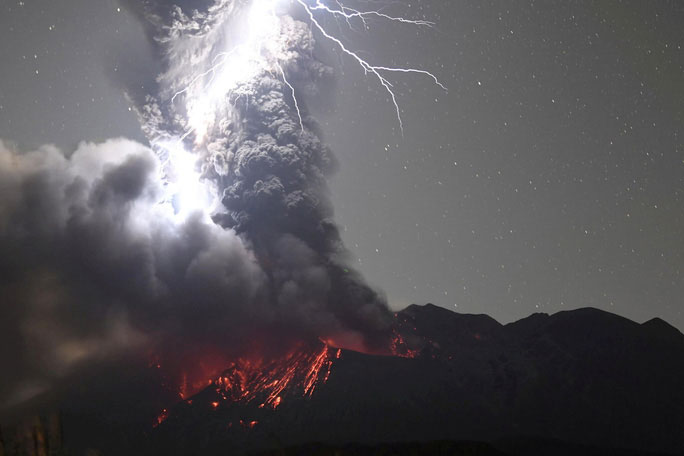Muons – those elusive subatomic particles created when cosmic rays enter the Earth’s atmosphere – are being utilized by scientists to map volcanic structures, aiding in the prediction of hazardous eruptions.
According to Science Alert, muons are present everywhere, and if you were to detect them, you might experience hundreds of muon hits towards you every second. The good news is that they are harmless.
For the scientific community, muons are gradually becoming a treasure. Four years ago, archaeologists used these particles to uncover a hidden chamber within the mysterious Giza pyramid.

Muons can help map volcanoes and predict dangerous eruptions – (Photo: REUTERS).
A recent study published in the journal Proceedings of the Royal Society reveals a new application for muons: allowing them to penetrate volcanoes, thereby capturing images and mapping the structures of magma flows hidden inside.
Geophysicist Giovanni Leone from the Atacama University in Chile likens this method to “X-raying” volcanoes. Many muons can pass through the sides of volcanoes; however, in some sufficiently dense volcanoes, they may not reach the other side.
According to Business Insider, by estimating which muons “survive” their journey, researchers can determine the density of various locations within the volcano, thus creating a vivid map by deploying a series of muon detectors on both sides of the volcano. Areas where muons pass through completely will appear black in the images, while areas with fewer muons will appear whiter, similar to an X-ray film.
This method helps generate a rough 3D image of the volcanic structure, facilitating the detection of magma reservoirs and monitoring the movement of magma flows, which can predict the rise of this molten material – a sign of impending eruptions.

















































